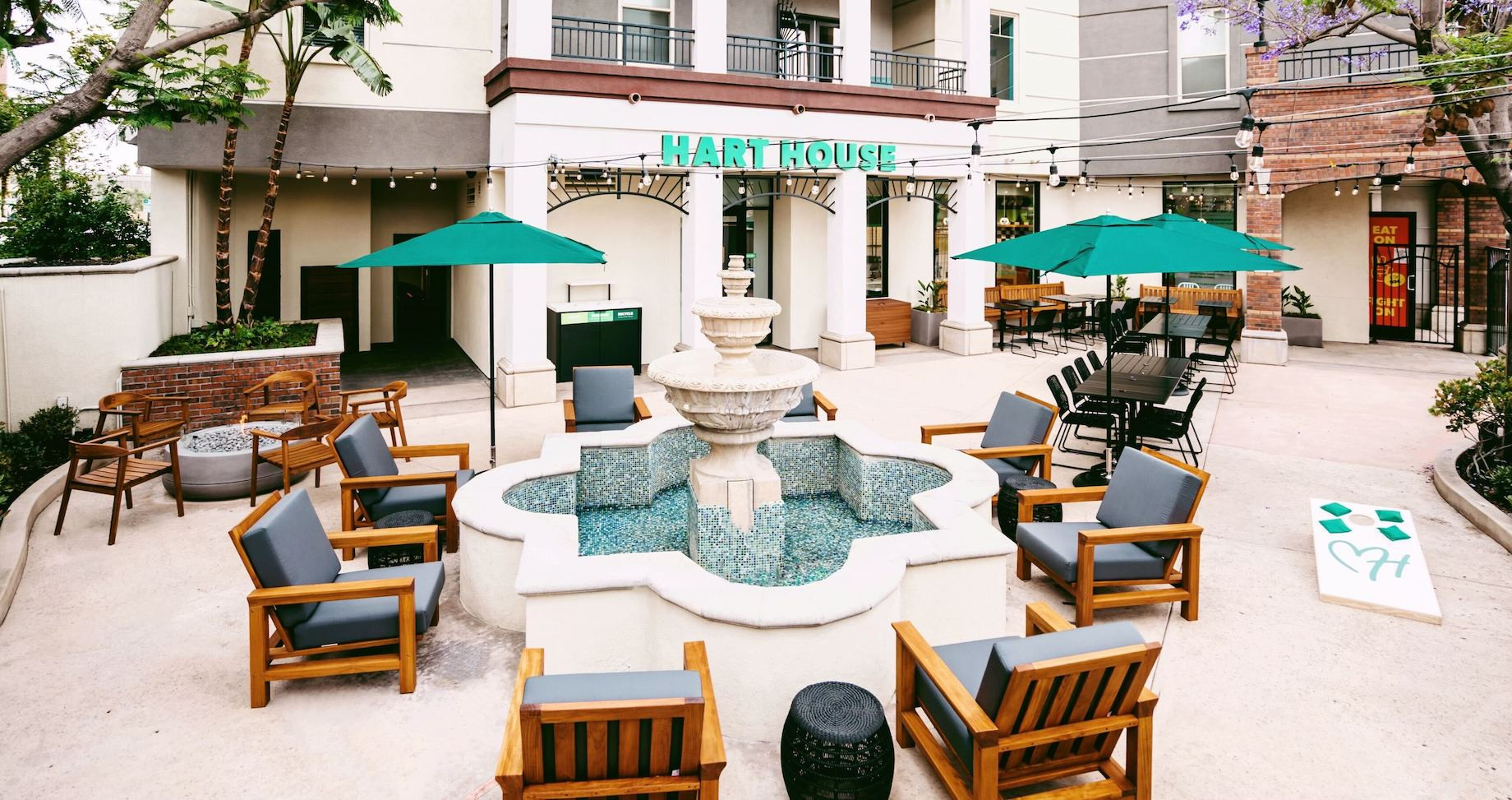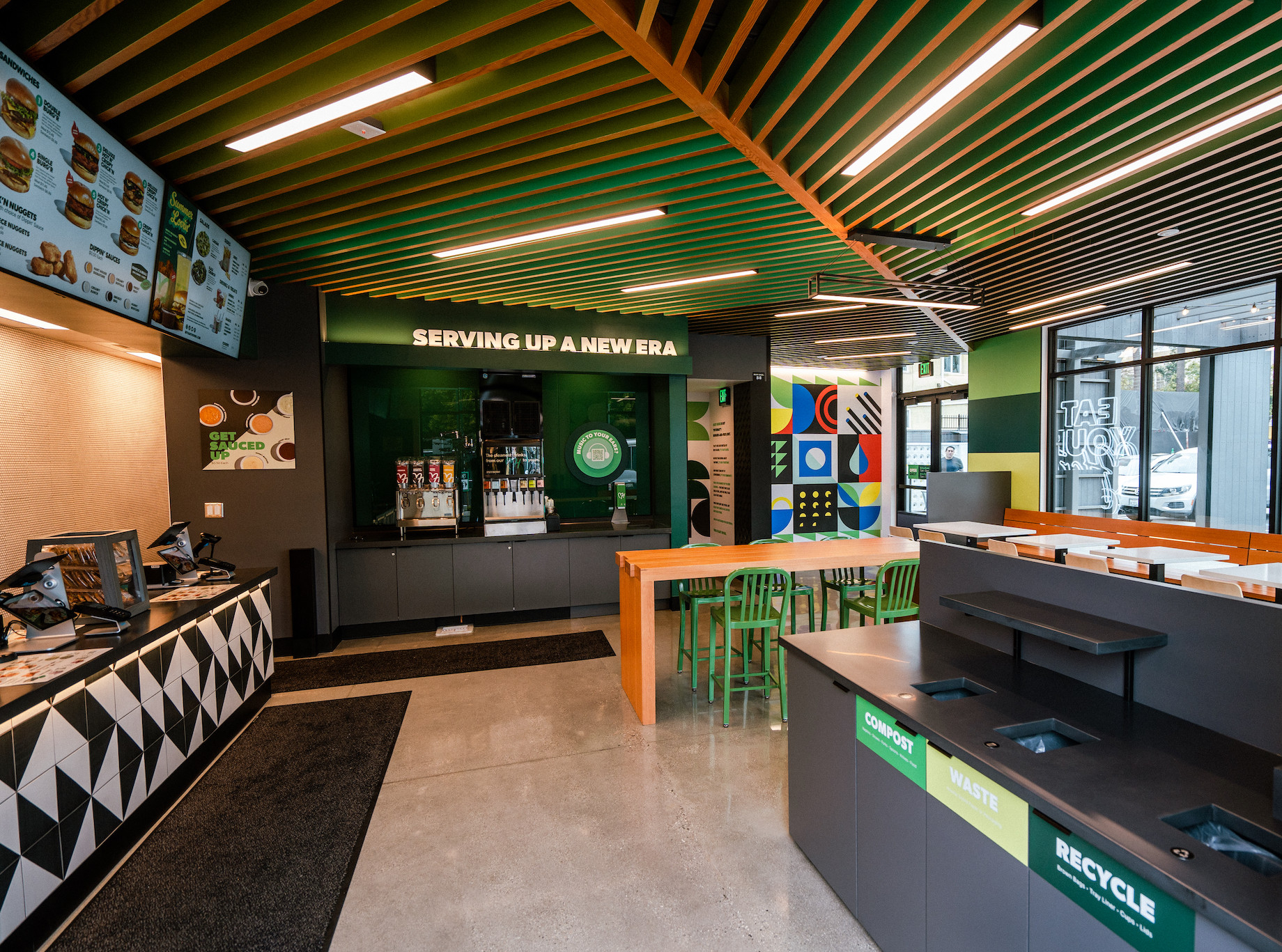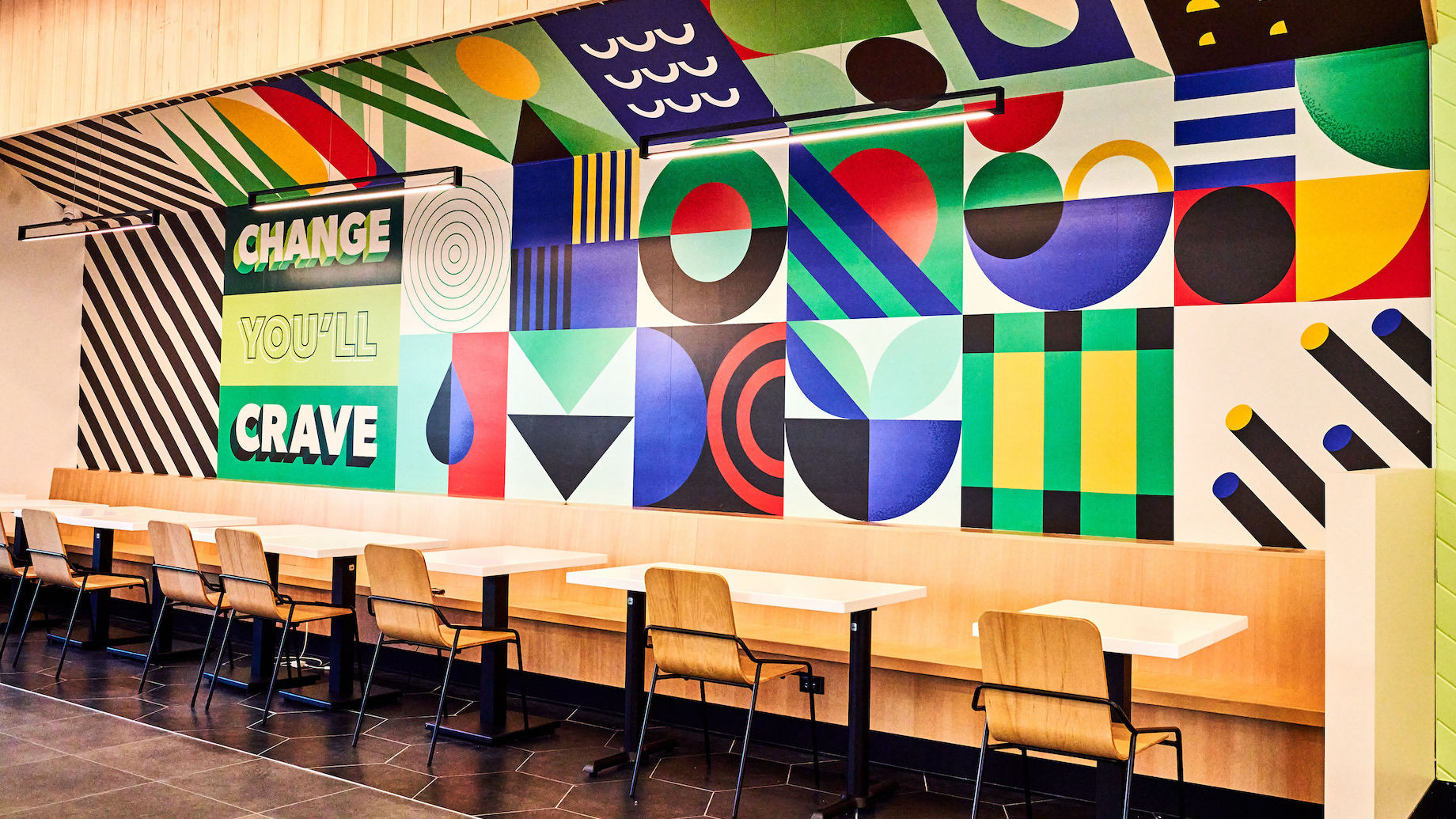In August 2022, the first Hart House — a quick service, plant-based restaurant started by actor and comedian Kevin Hart — opened in Los Angeles, a short walk from the In-N-Out by LAX airport. Three other locations have opened since, including a drive-thru on Sunset Boulevard in Hollywood and a 1,300-square-foot spot across from the University of Southern California. Chief development officer Patrick Chamberlain would like to reach 100 restaurants in five years and household-name status in 10.
The goal of the restaurant is to serve affordable food people might not even realize is vegan. “It’s about getting the customers that aren’t necessarily your target or your demographic,” Hart told Eater LA. “You’re trying to appeal to all. [Hart House] is plant-based, but it’s really good. How can we get everybody to say: ‘I want Hart House today.’ That’s something I’ve been able to do in my career.”
Today, Hart House has about 45 deals in the works for restaurants across Southern California, Atlanta and Washington, D.C.
ICSC Small Business Center contributing editor Rebecca Meiser talked with Chamberlain about understanding Hart House’s target market, what it has learned about choosing properties, what small business owners looking to scale their own businesses should think about and more.

Tell us about the origin of Hart House. How did this concept begin?
A lot of it stems from Kevin Hart going through a rehabilitation process as part of an accident that he was in several years ago. His dietician recommended that he start incorporating some plant-based alternatives to meat products in his diet. In doing that, he noticed he felt better. But when he was on the road traveling, there really wasn’t anywhere that he could consistently get plant-based meat alternatives that were accessible and reasonably priced.
The menu is entirely plant-based. Why not offer a few meat-based options?
It really aligns with who we are as a concept. One of the core pillars of [our business] is sustainability. As we looked at where we’re sourcing our ingredients and at the co-manufacturers that we partner with and the sustainability of being able to have a viable concept in 20 to 30 years, it was really important that it was all plant based. For us, the menu design and the simplification of it were all very intentional. We wanted to really make a statement that a true plant-based concept could be successful in the quick-service space.
You talk about wanting to have a presence. Do you worry that being entirely plant based would limit your audience? Did you do market research before you started plotting out restaurant locations?
A lot of market research went into our planning. We looked into: What is the total addressable market of a concept like this? What are we out to accomplish? Are we looking to convert existing consumer habits? Are we looking to change guest behaviors? Are we looking to cater to specifically vegans or vegetarians or people with dietary restrictions? And the answer was: If we want to give this the fair opportunity that it deserves, it’s important that we market it to everyone because this food is meant for everyone. In a lot of our marketing, we don’t advertise Hart House as a vegan concept because the word “vegan” can be polarizing.
A lot of small business owners see how one store goes, then look to expand. From the beginning, your plan was to have hundreds of restaurants nationwide. What does that look like from a planning perspective?
It was really taking a look at the competitive landscape. This is a relatively new offering in a very established segment, the quick-service segment. When it came to growth, the guiding question was: If we’re going to be fast-forward food, how do we get to the future faster so that the most amount of people can have access? Part of that involves having an organic community-building experience that we can roll out across the country, and part of it was a lot of testing, asking: Is this a concept that has legs? Is our food truly craveable? Is it delicious? Is it something that people want in the marketplace? We just opened our fourth location near the University of Southern California, and we’ve found from feedback from all four of our restaurants that there is a place for this in the quick-service market, just based on the sales and guest feedback that we’ve received. My favorite is when people are shocked that what they’re eating is a plant-based-chicken sandwich. [From that data], we knew that we were on to something special and unique, so it was more a function of: How do we pace strategically and also have the opportunity to almost rewrite the narrative around how quick-serve, fast-casual concepts get rolled out?

Hart House’s fourth location opened in late June just south of the University of Southern California.
What does scaling up look like on a practical level?
When I joined [in October 2022], one of my major initiatives was to build the real estate pipeline. We probably have about 45 active new deals that we’re working on right now. That includes Southern California inclusive of San Diego and then also the D.C. market and the Atlanta market.
What are you looking for in terms of store size and location?
From a size component, we’re at the intersection between quick-service and fast-casual. Our sweet spot is around the 2,000-, 2,200-square-foot range. We have restaurants, though, that are as large as 3,000 square feet, and we just opened a 1,300-square-foot restaurant. Ultimately, the size will be impacted by suburban versus urban and the area trades, whether it’s a walking trade area or more of a grab-and-go.
When we’re looking at locations, the biggest thing to me is access because we are tapping into a very established segment, in the quick-service space. We need to be highly accessible to get our guests in the door to try the food. If it’s difficult to get to, if it’s not easy to see, if it’s not easy to park, we’re creating these barriers of entry against ourselves. We’re also looking at the focal point of the trade area. Where’s the 50-yard line in the area? Where’s the majority of the synergy happening? Where are the most eyeballs looking?
Finding the balance between a strong daytime and residential population is really important because, as any fast-casual or quick-service restaurant owner would tell you, you need a lunch business to be a viable concept. Today, we are skewing more suburban because we’re seeing a lot of people have this flexible work environment where they can work from home a couple of days or the entire week. We’re trying to strike that balance of being able to support consistent operation throughout the day from 11 a.m. when we open to 10 p.m. when we close.
Then outside of size and trade area, the other characteristics we’re testing out are different real estate types: end-cap locations versus in-line locations, freestanding non-drive-thru locations versus freestanding drive-thru locations.

You opened your first drive-thru location in May in Hollywood. How did that go? What did you learn?
We had an incredibly successful opening. We couldn’t have been happier with the sales, which have continued to hold, which is phenomenal. We’ve learned, though, that we need a bigger parcel of land than what we had originally thought. We’re on less than half of an acre. Going forward, we will be looking for a minimum of probably three-quarters of an acre to be able to fulfill the queue, the parking and the in-restaurant and out-of-restaurant dining experience. And as we look at future designs, we’re really focused on: How do we optimize off-premises sales, whether that’s grab-and-go or our guests are ordering through a third-party delivery partner. We want to ensure that that experience — whether you’re a guest, whether you’re a driver, no matter who you are — is highly accessible and is as seamless as it possibly can be, so that requires more land.
Is there a specific style or decor you’re going for?
That’s been probably one of the most fun parts: How do you create a quick-service environment that feels elevated and intentional and unique and has pops of color? Community is a big, big thing for us. We don’t just want to open and be a restaurant of convenience. We want to be a community establishment. To that end, we’ve engaged with [Los Angeles arts nonprofit] Inner-City Arts for all of our restaurants and asked them to provide artwork we partner on. But we’re not quite at the point where I feel we need a prototype because we’re still testing out different formats, different real estate types, different design styles. One thing that you can expect at Hart House is a comforting feel of what quick-service has looked like in the past but in a much more elevated, creative, fun and playful way.

A plant-based, quick-service restaurant feels like a natural fit in California, but do you see this concept catching on in, say, the Midwest?
Candidly, I feel like Hart House will be successful just about everywhere. I fully recognize that we only operate today in California. But D.C. and Atlanta will be two really good tests for us on this concept, D.C. being a noncoastal, highly competitive, fast-casual, quick-service market where a lot of concepts have actually started and then Atlanta, which is one of the No. 1 plant-based consuming cities in the United States. I often get asked: ‘Who are your guests coming into the restaurant?’ The most amazing thing is: It’s everyone. We have people from different generations and different ethnicities. We have younger people, older people, families, students. The reactions have just been absolutely phenomenal. I fully recognize that we’re going to be up against more competition as we continue to expand across the United States, but I don’t think that there’s any market [where] I don’t see there being a fleet of Hart Houses that wouldn’t be successful.
You’re still just starting out. What does your marketing look like?
Given that this is the brainchild of Kevin Hart, we’re really fortunate that we have this organic reach through his [social media] outlets. We can reach hundreds of millions of people when he posts something related to one of the restaurants. But that’s not necessarily a marketing strategy. While Kevin is incredibly important to the brand and we very much identify that he is the cornerstone of how we got here today, we have to be able to operate outside of just Kevin’s influence. Our brand team is very focused on casting a wide net: through local store marketing, getting out into the community and talking to our neighbors, and social media ads. Our marketing has been highly intensive thus far. We’ve done everything from running bus signs to scavenger hunts throughout L.A. and a lot of fun, creative activations that really bring the brand more to life. Check out the domain www.onlyplants.xxx. It’s really cute. We basically took our food and put an adult playful spin on it.
“You truly need to understand who you are, what you stand for, what your brand is about, who you want to be, how you want to be perceived and how you want to be positioned within the market.”
What advice would you give to small business owners looking to scale their businesses?
The first thing is to have an unlimited amount of knowledge about who you are as a concept. You truly need to understand who you are, what you stand for, what your brand is about, who you want to be, how you want to be perceived and how you want to be positioned within the market. The second thing is to surround yourself with the right people. To build a brand off the ground takes a lot of hustle and grit. It’s very exciting and appealing when you have hundreds of restaurants, but to get to that point, it’s a complete grind. For us at Hart House, it’s really important that we work with people that are empowered to do great work and who we trust and respect. Talent is really important, and experience is really important. And you have to have full conviction behind what you’re doing. There are days when you’re on top of the world, and there are days when you feel the complete opposite. You need to remind yourself that there’s a reason you’re doing this. So long as you have it mapped out strategically, it’s just about executing the plan and pivoting as necessary. Working in startups is a challenging environment, but so long as you’re passionate and believe in what you’re doing, it makes the work more fun and inspires you to work harder.